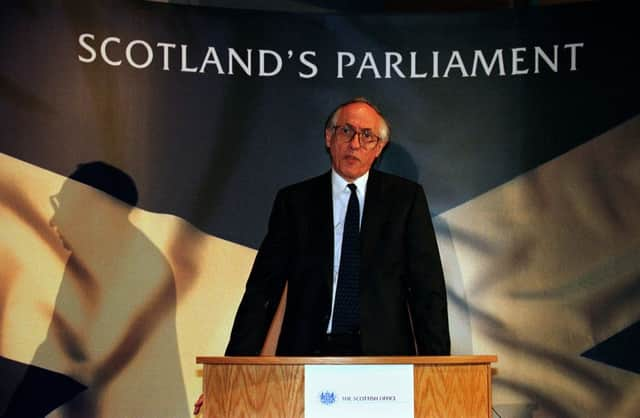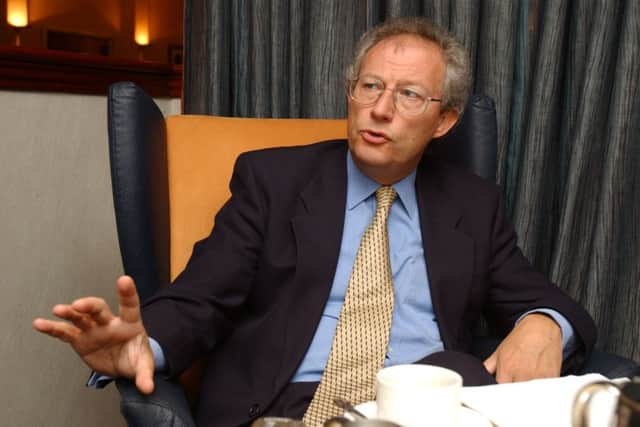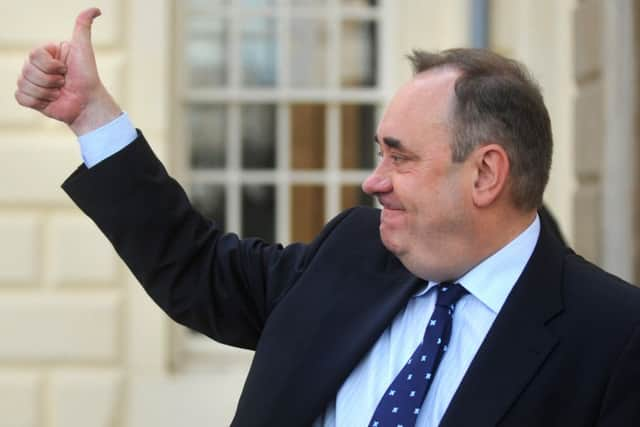Scottish Parliament at 20: How have our First Ministers fared?


It is highly unlikely that Donald Dewar ever considered himself to be the founding father of a new Scotland.
Certainly his elongated, angular frame would have rebelled against the weight of any such pretension and his inclusiveness as a politician would see him point to others as being far more influential.
Advertisement
Hide AdAdvertisement
Hide AdBut without doubt, Dewar was key to bringing devolution to Scotland, and creating the Parliament in which 129 MSPs sit today.


It was he who took the Labour Party into the Scottish Constitutional Convention in 1988, who was a doughty defender of the additional member voting system for the election of MSPs, and it was he who said everything that wasn’t specifically reserved to Westminster, should be devolved.
He was a driven man, taking on many constitutional fights within his own party, because according to his friend and one time special adviser, Wendy Alexander, he “was not a sectarian politician. He felt that it was important for the Parliament to be seen as not a tribal payoff to the loyalty of Labour voters, but a constitutional advance for the nation as a whole.”
That was apparent when he agreed that the Scotland Bill, which would create the Parliament, would include no barriers to potential independence; it ensured that Alex Salmond and the SNP would be on board for the devolution referendum campaign in 1997.


Dewar had a vision and he single-mindedly pursued it. And on May 17, 1999 he became Scotland’s first First Minister with his opening speech on the first day of the Parliament showing the direction of travel he desired. MSPs, he said, should never lose sight of why they are in Parliament – “to do right by the people of Scotland, to respect their priorities, to better their lot and to contribute to the common weal.”
Even the design of Holyrood’s debating chamber, a semi-circle, was important to show that Scotland would do politics differently to Westminster; it was a desire for a more consensual approach, which came to fruition when Labour and the Liberal Democrats worked together in the first Scottish government.
But his new administration was quickly embroiled in an access-to-ministers scandal, the Holyrood building fiasco and the repeal of Section 28. As he himself admitted the first year was “towsy”.
And sadly he did not see the Parliament embed itself in Scottish culture, with his untimely death in October 2000.
Advertisement
Hide AdAdvertisement
Hide AdHe was always going to be a hard act to follow. In hindsight Henry McLeish was perhaps not the man to attempt it. To this day he is the only First Minister who has had to resign from the office.
The son of a miner, a brief spell as a footballer was overtaken by town planning and politics and be became then a Fife Labour councillor, before heading to Westminster.
McLeish worked with Dewar as a minister in both the UK and Scottish governments and as devolution minister from 1997-99, had helped pilot the Scotland Bill through the Commons. He remembers the early days as being about “building structures, building processes, building networks, very much nuts and bolts stuff in terms of the actual facility of the parliament itself.”
So when Dewar died he was regarded as a “safe pair of hands”. But unfavourable comparisons were never too far away: where Dewar was cerebral and a fierce debater, McLeish was regarded as plodding and mocked for his mangling of the English language.
However, he still masterminded Scotland’s historic scheme to provide free personal care for the elderly; and skilfully handled the outbreak of foot and mouth, which caused a crisis of confidence in farming.
His downfall, when it came, was financial. He thought it was an “honest mistake” that for 14 years he had received an income from letting his constituency office, while at the same time claiming office expenses. His inability to resolve the “officegate” scandal ultimately forced him to stand down, though he still described his actions “as a muddle, not a fiddle”.
The resignation of McLeish was concerning to those who believed in the devolution project. Perhaps concerns that it would just be a bigger council, a talking shop and no more, were true?
Jack McConnell – the third Labour FM in three years – did not think so. A political streetfighter, McConnell like McLeish, had been a councillor and was perhaps more charismatic – some said “cocky” – than his predecessor. Certainly he was more robust and something of a political gambler – even an admittance of a previous extra-marital affair did not put a dent in his ambitions.
Advertisement
Hide AdAdvertisement
Hide AdDescribed as Scotland’s first truly Scottish First Minister – because he had not served in Westminster – he was determined to see devolution succeed but was keenly aware that the Parliament needed to settle. As a result, while he drove through the ban on smoking in public places, he was accused to doing little else. His own personal ambition, it was said, did not become ambition for the Parliament.
And of course it wasn’t all plain sailing. He was mocked for wearing a pin-striped kilt at New York’s Tartan Day celebrations, had to reverse a decision to attend a golf club dinner instead of D-Day commemorative events in Normandy, and for telling a group of high school pupils it was “OK to get drunk once in a while”.
It took the joint forces of Nicola Sturgeon and Alex Salmond to throw a spanner in the Labour rule of the Scottish Parliament. And if there was a politician who was perhaps fated to become First Minister, it was Alex Salmond.
A man who been variously described as one of the “most talented politicians of his generation” and a “populist with strategic skills”, he took McConnell’s cockiness and turned up the dial.
Initially a gradualist towards independence, he happily threw his lot in with Dewar on devolution, but his initial relationship with Holyrood was rocky. Despite becoming an MSP he carried on as an MP too – spending most of his time at Westminster – and quit the Scottish Parliament in 2001.
However he made a dramatic comeback to the leadership of his party and stood for election to Holyrood once again in the ground-breaking 2007 elections when he led the SNP to it’s first ever parliamentary election victory, with Sturgeon at his side.
His first period as First Minister was one of competent managerialism, of governing on a “policy by policy basis”. But he did put down a marker by changing the name of the administration from the Scottish Executive to the Scottish Government, and then there was an often-forgotten white paper on an independence referendum produced in 2009. It had to be withdrawn after failing to obtain support from other parties.
His softly sofly approach to independence and the continuing collapse in Labour’s fortunes saw the SNP win an outright victory in the 2011 Holyrood elections – something Dewar’s proportional represention was supposed to prevent ever happening – and gave him the platform required to demand an independence referendum.
Advertisement
Hide AdAdvertisement
Hide AdDespite a hard-fought campaign on the “Yes” side, voters rejected independence by 55 per cent to 45 per cent in the 2014 vote and, the following day, Salmond announced he was standing down as both First Minister and SNP leader.
It left the way clear for his deputy Nicola Sturgeon to become the first female First Minister of Scotland. Her style of governing couldn’t be more different from that of Salmond’s bombast.
A solicitor like Dewar, she may have gained an early reputation for being overly serious, but while Salmond remained at Westminster she became the party’s “Holyrood leader”, cutting her debating chamber skills on McConnell’s tough skin.
After the 2007 election, she became health secretary, seeing through popular SNP pledges such as the reversal of A&E closures and the abolition of prescription charges. She also won praise for her handling of the swine flu crisis, and played a large part in the SNP’s historic majority in the 2011 election.
After her part in the independence referendum she was the obvious successor to Salmond and in her first six months in the job, she led the SNP to it’s biggest electoral success in a general election winning 56 of the 59 seats in Scotland. Then came a third successive victory in the Scottish Parliament election in 2016, though again there was no outright majority.
The EU referendum and her approach to Brexit has seen Sturgeon become a more UK figure than before – but she is a cautious politician, and while the desire for another indepedence referendum grows, she has thrown down the gauntlet to opposition parties to work with her on developing Scotland’s constitutional future.
And only a crystal ball will tell what the fifth First Minister is eventually remembered for.
